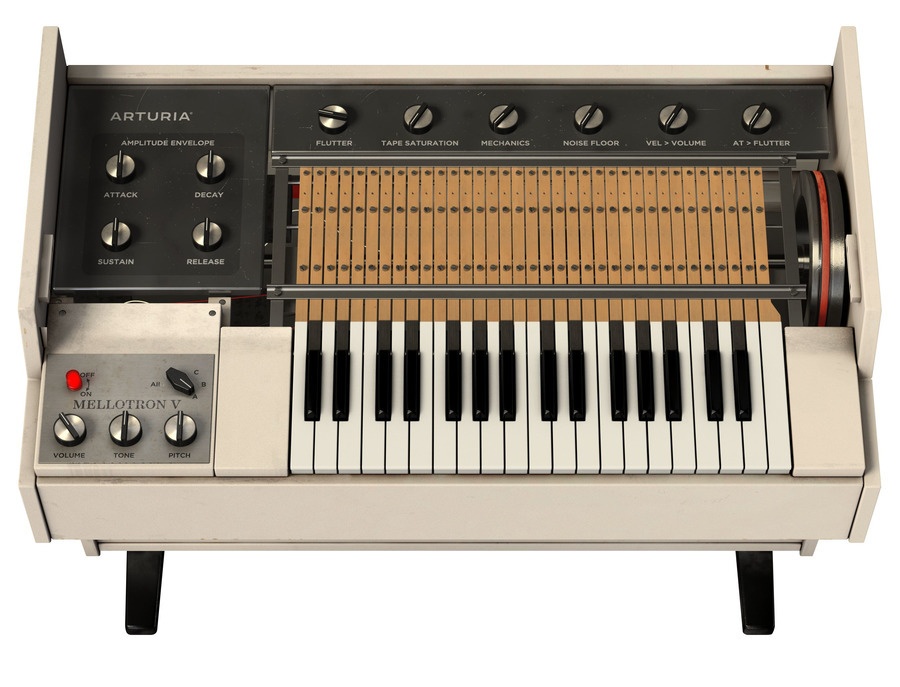

In collaboration with Steinway & Sons, Modartt has recorded a beautiful new Model D Concert Grand at the famous New York Steinway Hall. New grand piano modelled after a New York Steinway Model D All pianos in Pianoteq 7 are constructed and revoiced using this new physical model. It also allows longer sustain, particularly in the bass range, with notes lasting up to a couple of minutes, just like on a real acoustic piano. The new physical model allows more complex tones to be produced, and as observed by a pianist, the sound becomes "three-dimensional". parallel or perpendicular to the soundboard. It consists in modelling string vibrations that can take any direction, e.g. Modartt introduces a new refinement in its physical model: the double polarization. Listen to audio demos Refined physical model

The difference between Morphing and Layering is that in the latter the two sounds are mixed together, whereas in Morphing the instrument Physics itself is being morphed. playing Bass Marimba in the low range, Xylophone in the upper range and mixing both together in the middle range. On popular demand, Modartt adds a new layering feature in Pianoteq 7 (Standard/PRO) allowing to mix several instruments, e.g. This innovative technology handles the morphing at the physical modelling level, providing stunning acoustic authenticity to instruments that never existed. These are however three of the many instruments you can create with the acoustic Morphing introduced in Pianoteq 7 (Standard/PRO). The instruments XyloHarp, VibraDrum or GlockenTines certainly do not exist. Since the Celeste Pedal is continuous, it lets you adjust the thickness of the felt.

It is based on the improved Celeste Pedal which makes use of a virtual felt strip that is interposed between hammers and strings to achieve a softer, and more delicate, sound. What's new in version 7 Felt presets with improved Celeste Pedal (available as from version 7.4)Ī new ‘Felt’ preset is added to all contemporary pianos. Up to 48 kHz in PIANOTEQ Stage and Standard.
#PIANOTEQ 5 BASS PRO#
PIANOTEQ PRO offers an internal sample rate of up to 192 kHz. Presets built with PIANOTEQ PRO can be loaded in PIANOTEQ Standard without limitation. In PIANOTEQ Stage, preset loading is limited to parameters that are present in the interface. You can purchase additional instrument packs at any time. These instrument packs are fully working whereas remaining instrument packs are available in demo mode for your evaluation. During registration, you can choose two instrument packs with the Stage version, three with the Standard version and four with the PRO version.

Note-per-note edit: all other physical parametersĬoncerns new purchases from 2019 onward. Note-per-note edit: volume, detune, attack envelope Information - Concerts, News,FAQs, Archives. Organs - Electronic (B3 etc.), Pipe, Theatre.
#PIANOTEQ 5 BASS PROFESSIONAL#
Who's Who - Professional Pianists on Piano World Member Recordings - Non Classical Pianist CornerĮVENTS! Piano Concerts, Recitals, Competitions.įun Stuff! - Parties, Tours, Projects & More.įorum Members Parties, Tours, Cruises, & M. MY NEW PIANO or KEYBOARD! - Share Your Story! And may even make basses sound worse in a room with bad acoustics.ĭigital Pianos - Electronic Pianos - Synths &a. Separate sub in general would make sense if it is in 10-12" range, but it is pretty much useless for acoustric piano IMO. If not a fear of my wife ( ), I would buy a pair of good 3-way monitors, such as KH 310, but have to live with what I have on my table already. I love rumbling grand piano basses, but this does not mean distorted! Personally, for piano I would prefer a traditional cone design and materials to avoid any chance of coloration, and traditional usually means bigger size, but again - this is subjective and very personal. There is no way 8 and 6 would have close frequency response curves in lower part of spectrum, 8 and 7 produced by different makers with different tech behind may achive a similar curve IMO (and in this case the woofer with lighter and stiffer cone may sound cleaner or harsh/dry, again - it depends).
#PIANOTEQ 5 BASS DRIVER#
The difference you were hearing is more likely related to the response curve of the driver rather than the size-up.īut the frequency response curve definitely depends on the driver size, at least for the same technology and materials used for woofer, right?


 0 kommentar(er)
0 kommentar(er)
